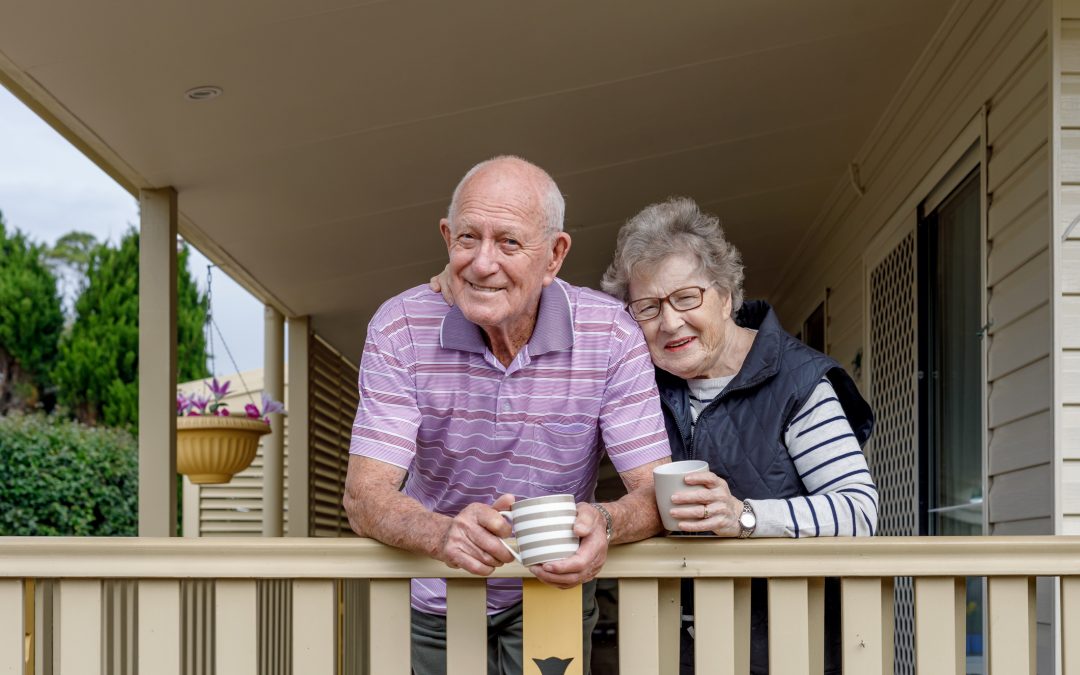Darren Moffatt from Seniors First shares a case study of how a Reverse Mortgage can make a huge difference to the lives of Age Pensioners who are struggling to make ends meet.
*Oliver and Charlotte are age pensioners who worked hard all their lives and are proud that they own their home, which they purchased in the ‘70s for only $55,000. Thanks to compounding property growth over time, their home is now worth around $800,000.
The couple have been retired for five years now, and while they are happy with their retirement, Oliver’s superannuation ran out recently and they have been struggling to make ends meet.
They’ve already minimised their expenses (mostly on socialising), and even though life is not as much fun anymore with the pension as their only income source, they have enough money to scrape through most weeks.
But lately, their old car has been giving them trouble and Oliver’s keen to sell it before it breaks down. Charlotte’s also not happy with the kitchen; it hasn’t been upgraded in nearly three decades.
They approached the local bank for a loan, but because of their limited income they are not eligible for a standard home loan.
At the suggestion of a friend, the couple decided to investigate Reverse Mortgage financing options for age pensioners available through a specialist broker.
With their home valued at $800,000, they learned that they can access up to $200,000 that they can take as lump sum, a cash reserve, a regular income stream, or a combination of all.
After discussing their situation with a specialist broker, they opt for a lump sum of $50,000 to buy a new car and remodel the kitchen, then receive a regular monthly income of $500 over 10 years to assist with the general living costs. On top of that, they also added a cash reserve of $90,000 to cover any emergency expenses.
What is a Reverse Mortgage?
If you are an Age Pensioner and you are in need of cash to live a more comfortable retirement, you may take advantage of a reverse mortgage, just like Oliver and Charlotte.
A reverse mortgage is a type of loan designed for retirees and pensioners who wish to unlock a part of their home equity so they can have the money they need for home renovation, aged care fees, added regular income, and more.
Similar to a traditional home loan, a reverse mortgage is also secured by your mortgage over the property. The amount of equity that can be unlocked depends on the value and the age of the property.
The interest is ‘capitalised’ or charged back to the loan account and will compound over time so the balance of the loan will increase unless voluntary payments are made.
The loan, including all interest and fees owed, is repaid to the lender when:
- The borrower sells the property of their own accord, OR
- The borrower moves into aged care (not required with some lenders), OR
- The last surviving borrower dies
Will The Bank Take Over Your Home?
The beauty of getting a reverse mortgage is that you can choose to stay at your home as long as you want. There’s no need to move into an aged care facility or downsize.
As long as the borrower does not ‘default’ under the agreement by breaching key obligations, the bank cannot force a sale of your home.
Reverse mortgage contracts vary between lenders but common default conditions include failure to pay council rates, wilful neglect or damage to the house, and failure to keep the property fully insured.
For inquiries, you may contact Seniors First on 1300 745 745 or click HERE to learn more about the reverse mortgage application process
*Names have been changed for privacy.
————–






Is this reverse mortgage available on manufactured homes in a village
I own my home but pay site fees
Hi there Valerie
Unfortunately lenders don’t offer reverse mortgages on manufactured homes.
I guess a reverse mortgage is money owing so this will not affect the age pension payout and would not be reduced if you took a reverse mortgage?
Is there special interest rates for this type of mortgages or are they the same as market rates of the day for normal mortgages?
Hi Allyson
Surely when doing the numbers it would make a lot of sense sense financially if our retired couple were to move and downsized instead, to say a $500,000 property, mortgage free and with $300,000 cash in hand ? Without the risks and financial obligations that could lead to complications later (ie what happens after the 10 years?). Would’ve good to see a comparative study.